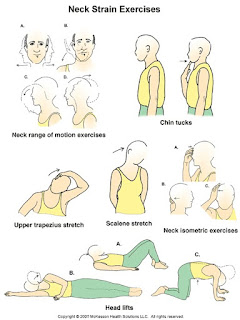Some biggest injury risks in gym

The first in our series of gym injuries is the deadlift. The basic aim of the deadlift is to lift a weight from the floor up to the hips, then lower it again while bending from the hips and knees.
Deadlifting is commonly used to develop overall body strength and as a result is extremely popular. It requires the use of almost every muscle group in the body and is particularly useful for:
2.Sports that require a large expression of muscular strength and power
3.Shoulder rehabilitation (due to the fact the exercise requires a considerable amount of scapular control)
The Injury Risk:
The areas most susceptible to injury due to incorrect lifting technique include:
Lumbar Spine ,Shoulder ,Cervical Spine.
Dips:
Due to most of us having tight pectoralis minor (normally due to poor scapular position caused by poor posture), when we perform deep dips, the tendency is for the scapula to move into an ‘anterior tilt’ direction at the bottom of the movement. This is due to the pec minor tightening up as we descend into the dip. What this does is wind up the rotator cuff and biceps tendon around the humeral head, and thus potentially leads to catastrophic injuries to these structures.
Deep squats:
Powerlifters perform deep squats usually with no ill effects. The reason is that over years and years of performing the movement, they develop the necessary functional flexibility to cope with this deep position. The inexperienced lifter lacks the hip flexibility to allow the pelvis to remain in a neutral tilt, and thus the lumbar spine in neutral. As the inexperienced lifter descends into a squat, the tension taken up by the adductor magnus and deep glutes tends to throw the pelvis into a posterior tilt. This then causes the lumbar spine to flex. Flexion of the lumbar spine creates enormous disc pressure, so under load of a deep squat, the discs in the lumbar spine can potentially be injured.
Early morning heavy gym sessions:
When we wake up in the morning from a delicious sleep, our lumbar spine discs are swollen due to us lying horizontally. The disc has reduced vertical pressure from gravity. What happens is that the disc then ‘sucks up’ fluid overnight. So when we wake up not only are we slightly taller, but the disc is already under pressure due to the extra fluid. If you are ever going to hurt a disc due to heavy squats or deadlifts, then you have a much better chance of doing so in the morning. As a rule of thumb, three hours is a starting point for delaying heavy lifting.
Push – pull emphasis:
Too many gym programs focus on the push exercises – bench press, shoulder press etc... In terms of volume, this tends to dominate the pull movements such as rows and pulldowns. There needs to be a balance between push vs pull as too many push based movements leads to shoulder and neck problems. If you wanted to weight one direction in your favour, do more pull based sets than pushed based sets.
Remember--
"There are no bad gym exercises, only bad bodies for certain exercises."



Comments